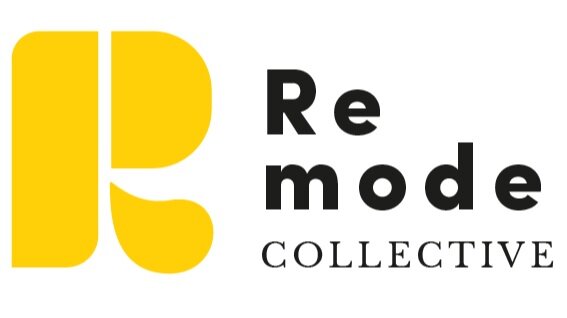How Scandinavia Is Paving the Way to a More Sustainable Fashion Industry
As with most environmental initiatives, Scandinavia is once again ahead of the curve. Making sustainable fashion a priority long before it was cool, the small Nordic region is leading the transformation of the fashion industry from a polluting money-making juggernaut into a kinder, more sustainable and ethical entity.
The Nordic Fashion Association, formed in 2008 to educate the industry about sustainable practices and principles, launched its first project in 2009, Nordic Initiative Clean & Ethical (NICE).
Since then, efforts have only increased. In 2019, Stockholm Fashion Week was cancelled due to sustainability concerns and has since reinvented itself, returning this year in an almost entirely digital format.
Denmark has followed suit. This year, Copenhagen Fashion Week launched a Sustainability Action Plan to reduce its environmental impact, aiming for zero waste by 2023. The plan sets a minimum of 17 standards for its designers, including using at least 50 per cent organic, upcycled or recycled materials, sustainable packaging, zero-waste set designs and a ban on destroying unsold clothes.
Scandinavian fashion brands have long had a focus on sustainability. Take Nudie Jeans. Since it was established in 2001, the Swedish denim brand has had extending the life of clothing at its heart. In addition to offering a free repair service for life, they also recycle second-hand Nudie jeans and use 100% organic Fairtrade and recycled cotton. Other Scandinavian brands, including Ganni, Arket, Filippa K and Rains, are reducing their carbon footprint through recycling and repairing programmes.
In recent years, there has also been a steady trend toward sustainability in the UK fashion industry. In the fall of 2018, the British Fashion Council (BFC) banned animal fur from London Fashion Week, and in 2019 launched the Institute for Positive Fashion designed to educate both the industry and the public on the importance of sustainability. Prominent British fashion labels are also making progress. By 2022, Burberry aims to be carbon neutral and reduce greenhouse gas emissions by 95 per cent, and Stella McCartney releases annual reports on its environmental impact using Environmental Profit and Loss (EP&L).
But comparing clothing consumption statistics between the UK and Scandinavian countries is revealing. The UK consumes more new clothing per head than any other European country, 26.7kg compared to just 16kg in Denmark and 12.6kg in Sweden.
So what makes Scandinavia such a standout? The answer may lie in the culture.
Scandinavian countries share very similar values, like enjoying a healthy work/life balance, maintaining a robust social welfare system and upholding an egalitarian society. It is no surprise, then, that every single Nordic country - Sweden, Norway, Denmark, Iceland and Finland – make the list for the top ten happiest countries in the world.
When the focus of a country or group of countries is centred around the wellbeing of its citizens, then taking care of their environment comes naturally.
Catarina Midby, the Secretary General for the Swedish Fashion Association, explained to Vogue how growing up in such a society has made her and other Swedes naturally attuned to the subject of sustainability. “I think Sweden is the country of equality [and] of allemansratten, (freedom to roam). We learn from early years that we have to take care of nature because it belongs to everyone, so this [sustainable] mindset for Swedes comes very naturally.”
A Norwegian fjord
From a young age, Swedes, Norwegians and Danes alike are encouraged to spend time in nature. Friluftsliv, or “open air living”, is central to Scandinavian culture. Activities like biking to work, taking a dip in the cold ocean followed by a session in a hot sauna, and hiking through and foraging in the forest all serve as daily examples of friluftsliv. These activities are almost second nature to Scandinavians, as are bike lanes, and you are never far from the ocean, a forest or the mountains.
Moderation is also an important value. The Swedish word lagom means “just the right amount” or “in balance.” Sweden’s low clothing consumption rate is a direct reflection of this, a far cry from the throwaway consumer culture so prevalent in the UK.
So, what steps can we Brits take to move away from a throwaway consumer culture and towards a more sustainable and ethical future? Like Scandinavians, we should spend more time in nature, enjoy life’s pleasures in moderation and place more emphasis on taking care of each other and the environment on which we all depend.
Harris Tweed production in the 20th century and the 21st century (from left to right)
As for encouraging local production, we already have at least one good model for this - Harris Tweed. Established long before the industrial revolution, Harris Tweed has been handcrafted by Islanders in the Outer Hebrides for generations. If our goal is to build a more sustainable and resilient economy, producing and marketing fabrics and clothing locally rather than consuming the unsustainable products from fast-fashion houses is a necessary and logical first step. Government policy, including tax breaks, grants and other incentives for local businesses to develop and thrive should be part of the solution.
Finally, the way we view society and the world must shift if we want to effect systemic change. We must see ourselves as a part of nature and not apart from it. Only then will our addiction to consumerism and fast fashion be cured and supplanted by a healthier and more sustainable dependence on each other.



